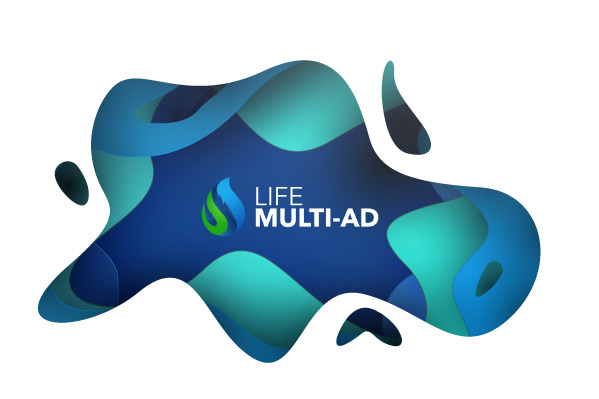The wastewater generated by these industries is characterized by having high concentrations of biodegradable organic matter.
At present, the wastewater treatment systems that are commonly used in this type of industry are aerobic treatments whose energy cost is very high due to the oxygen needs of the system. As an alternative, anaerobic treatments are proposed but, nowadays, these systems are optimized for the treatment of large flows and its high investment costs for their start-up is only profitable for large installations so this technology is unviable for SMEs due to the small amounts of wastewater they generate.

For this reason it is necessary to develop anaerobic reactors economically affordable to F&D SMEs that allow to treat their wast water efficiently,
as indicated in the EU Water Framework Directive (2000/60 / EC), and to produce renewable energy by biogas to contribute to the saving of natural resources, as described in Directive 2010/75 on Industrial Emissions of the EU, and reducing CO2 emissions.
In this context, the LIFE Multi-AD 4 Agro SMEs project come up in order to provide an affordable solution to this problem based on an innovative design of an anaerobic reactor patented by AEMA. This reactor has been specially developed for this type of industry and it
has been validated through a prototype of 100 l with wastewater from a winery. The results obtained showed a capacity to reduce the COD of the wastewater by more than 90% and high production of high quality biogas with a methane content of 80%.
Multi-AD technological solution is industrial-scale installed in the current WWTP of AGE Winery (Fuenmayor, SPAIN). The innovative solution is based on a multi-staged anaerobic reactor with a volume of 110m 3 that has a maximum daily organic load capacity of 2,000kgCOD and is capable of treating up to 200m3 /d of wastewater.
Objectives
The main objective of the LIFE Multi-AD 4 AgroSMEsproject is to develop and industrialize an innovative fully automated system for the treatment of wastewater generated by small and medium-sized companies from the Food & Drink (F&D) sector. This technology is based on the design of high-performance anaerobic multiphase reactor patented by AEMA and its production will be personalized according to the specific needs of each client.
The LIFE Multi-AD 4 AgroSMEs project will reduce both the environmental impact of F&D SMEs and the operating costs derived from their treatment and management of their wastes. In addition, compliance with the Water Framework Directive of the European Union (2000/60 / EC) and the purposes established by EIP-Water will be promoted, providing European F&D SMEs with a leading solution in line with the established global objectives for the Europe 2020 Strategy.
Actions
B1. Fluid dynamic analysis
Modelling and scaling of the anaerobic multiphase reactor using Computational Fluid Dynamics (CFD)
B2. Control system development.
Development of a new advanced control system based on logic rules that ensures the stability of the system against changes in the wastewater composition or operational conditions
B3. New multiphase reactor on an industrial scale
Design and construction of the new multiphase reactor on an industrial scale. Design and construction of a 100 m3 unit based on the results obtained in the previous actions.
B4. System validation
Installation and validation of the new system in a Spanish winery. The action will be completed with the optimization of the treatment design.
B5.Anaerobic reactor design tool
Development of a software to design and dimension the new reactor and the wastewater treatment according to the specific needs of each client.
B6. Market launching preparation
Development of our marketing strategy, identification of potential customers and development of the detailed business plan.
C1. Monitoring of the impact of the projectactions.
Regular control and monitoring of compliance with key project indicators (KPI) to ensure the minimum possible deviation from the objectives.
D1. Dissemination and communication.
Development of strategies and communication / dissemination activities of the results and progress of the project, as well as the tools required to implement both.
E1. Project Management
Control and monitoring of administrative activities and project costs.

